Finding crystals can be a rewarding adventure, offering a unique way to explore the natural beauty and geology of the region. Whether you’re a seasoned rockhound or just getting started, knowing where to look is key to uncovering these hidden treasures.
In this state, a variety of locations provide opportunities to discover different types of crystals. From rocky outcrops in the mountains to stream beds that carry sparkling surprises, each area offers its own unique finds for those willing to search.
We can help you get started with some places you can explore for crystals below!
Crystals you can find in the US
The United States offers a wide range of crystals that reflect its diverse geology. From vibrant gems to more subtle mineral formations, there’s something to discover in nearly every region.
Calcite
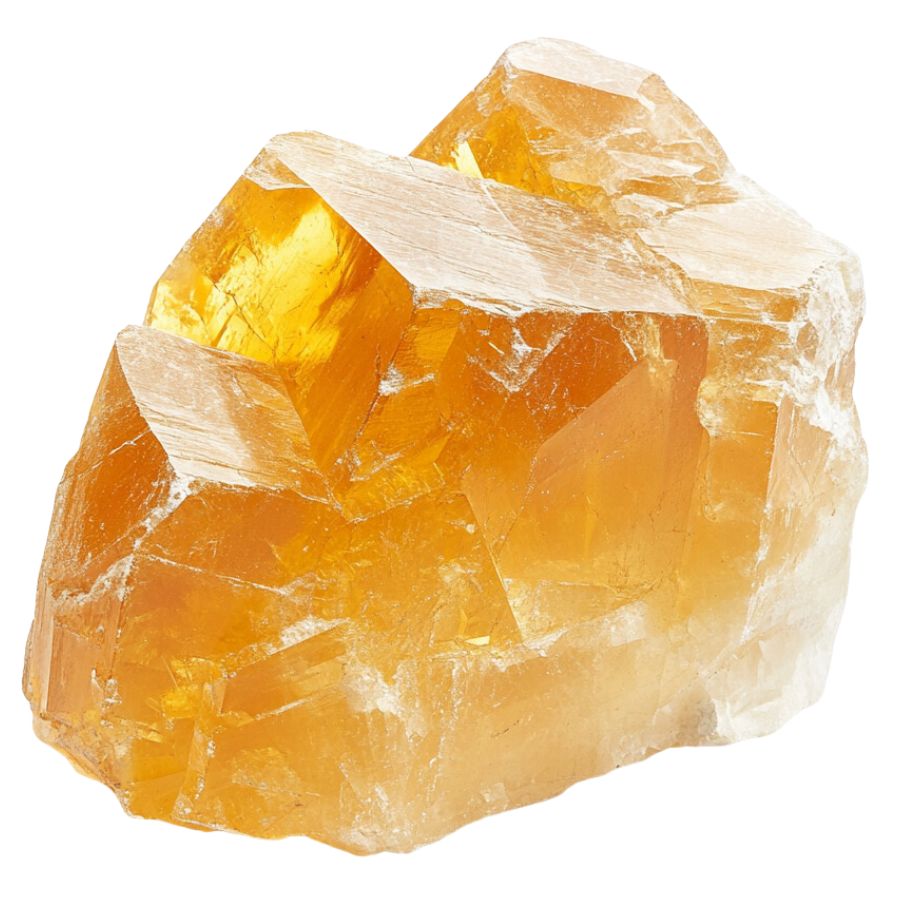
With a variety of forms and a unique property of double refraction, calcite allows objects viewed through the crystal to appear doubled. This mineral can appear in a spectrum of colors, with pure forms typically being transparent or white.
In addition, calcite reacts vigorously with acids, which aids in distinguishing it from other minerals. It also frequently contributes to the structure of sedimentary rocks such as limestone.
Gypsum
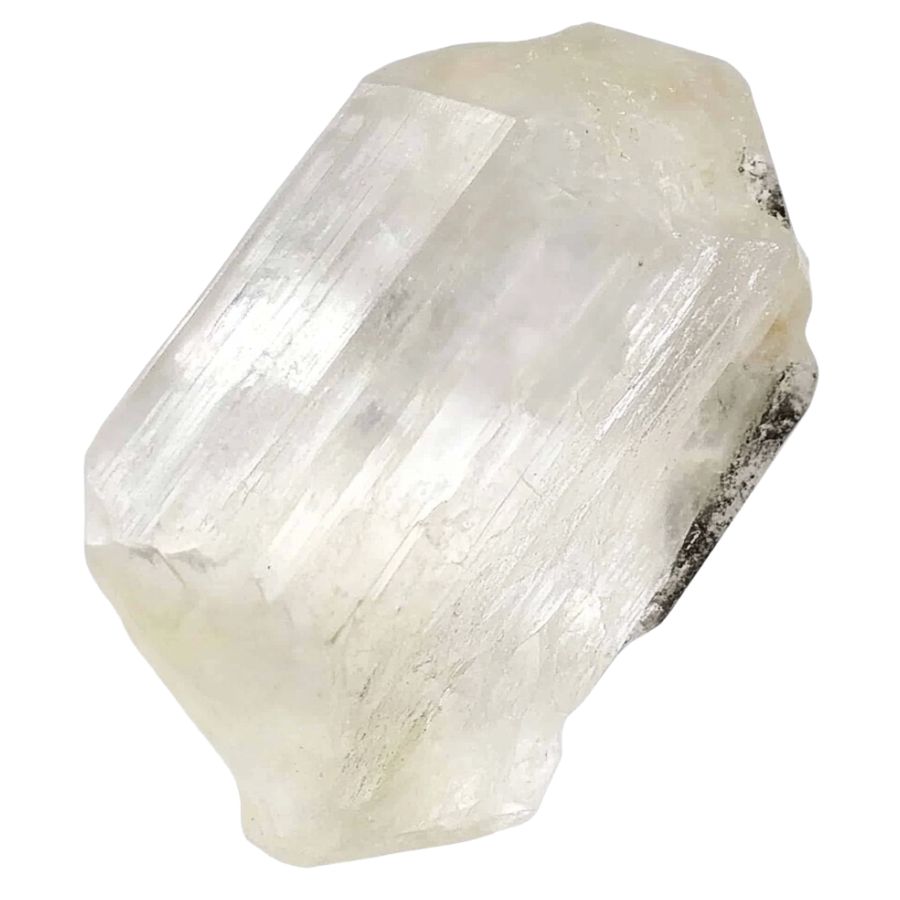
Gypsum’s notable softness allows it to be easily scratched with just a fingernail, often presenting as white or very light-colored in its pure form.
It manifests in both crystalline forms, like selenite, and massive forms such as alabaster, making it versatile in use and appearance.
Gypsum is also essential in the construction industry and is a key component in the manufacture of plaster and drywall.
Fluorite
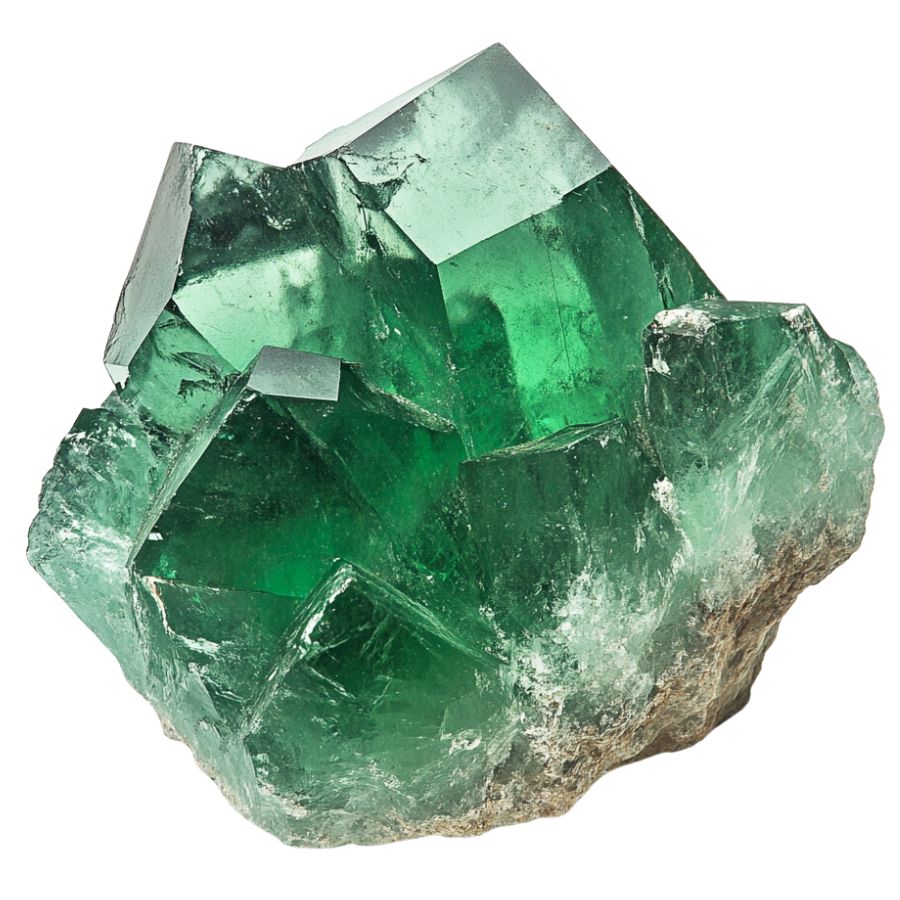
Fluorite comes in a wide range of vibrant colors, including purples, greens, blues, and yellows, and is known for forming in well-defined cubic crystals.
Beyond this, fluorite exhibits fluorescence under ultraviolet light! It can also be used in various industrial applications, including as a flux in steelmaking.
Galena
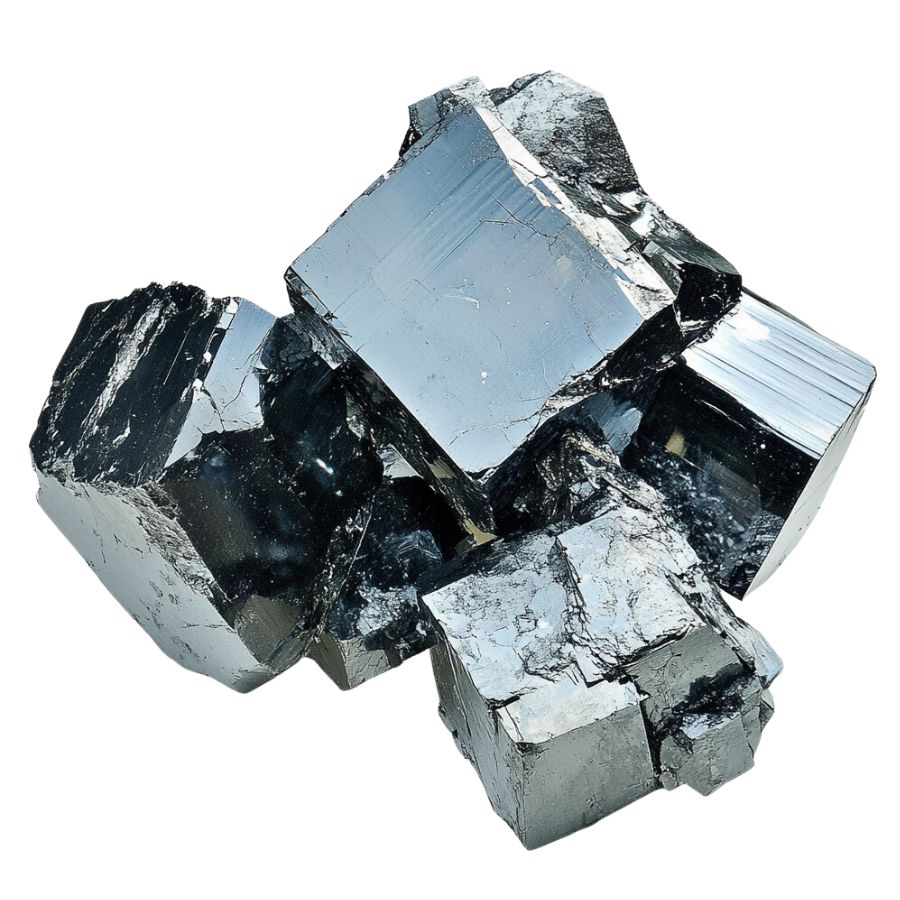
Galena distinguishes itself with a metallic luster and high density, typically found in a cube-like form. It serves as the primary ore of lead, making it important in the metal industry, while its shiny, silver color attracts collectors.
Not only does its appearance make it a subject of interest, but its weight and texture provide tangible lessons in mineral density and metallic properties. Galena also often contains traces of silver, adding to its commercial and educational value.
Corundum
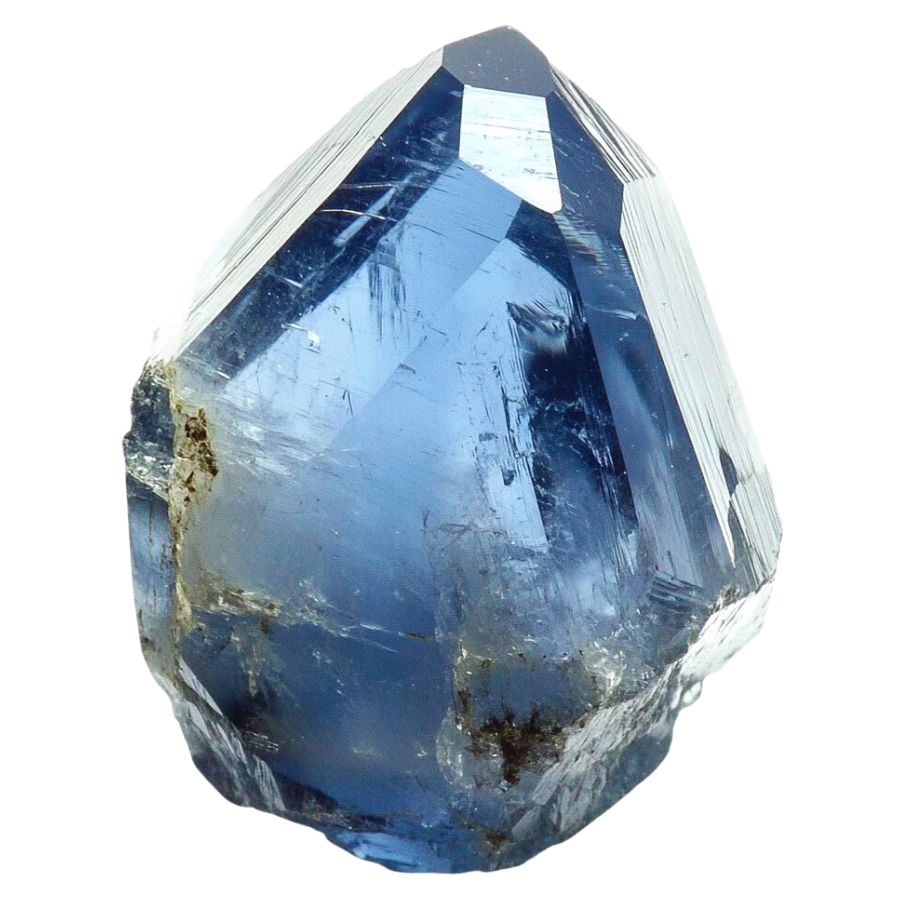
Corundum is a mineral that comes in a variety of colors, though it is typically transparent or gray. Its most famous forms are sapphires and rubies, which are prized for their vibrant blue and red hues.
The mineral is known for its remarkable hardness, ranking just below diamond on the Mohs scale. This durability makes corundum ideal for industrial abrasives and cutting tools, as well as a popular choice for fine jewelry.
Quartz
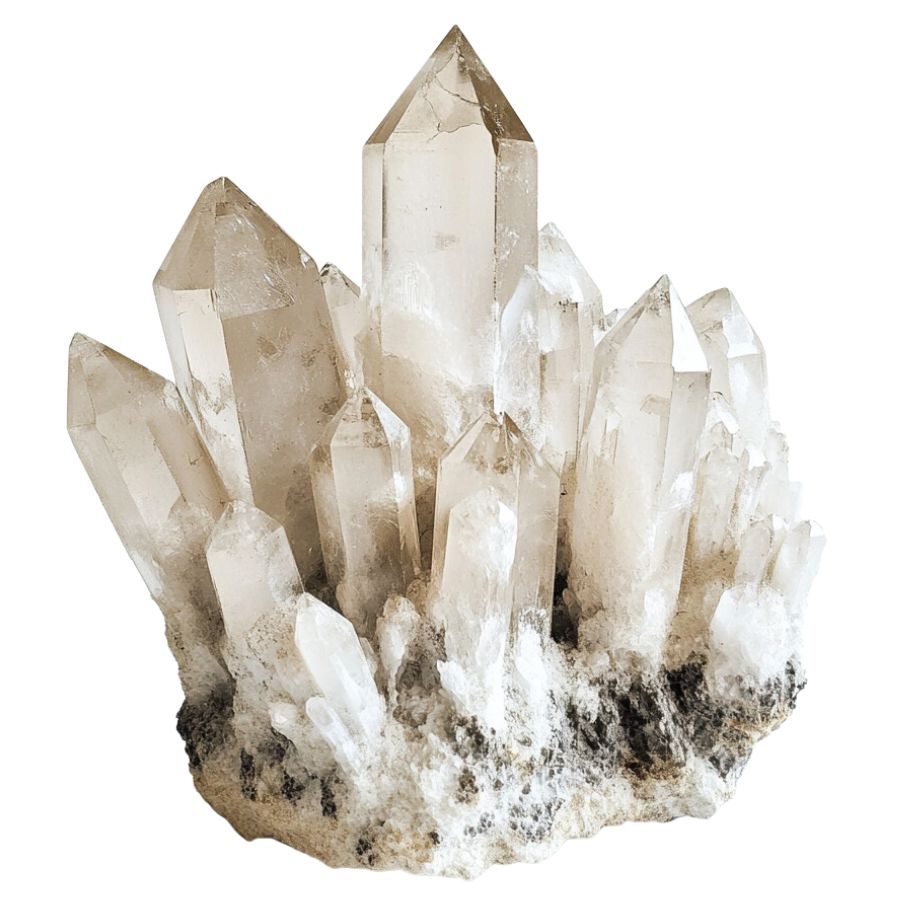
Quartz is among the most common minerals in the Earth’s crust and is prized for its durability and variety. It forms in a wide range of colors and types, from clear rock crystal to purple amethyst.
The mineral is notable for its hardness and durability, which contribute to its use in a variety of applications. Quartz is also popular in the manufacturing of electronics and watches due to its piezoelectric properties, which allow it to convert mechanical pressure into electrical energy.
Pyrite
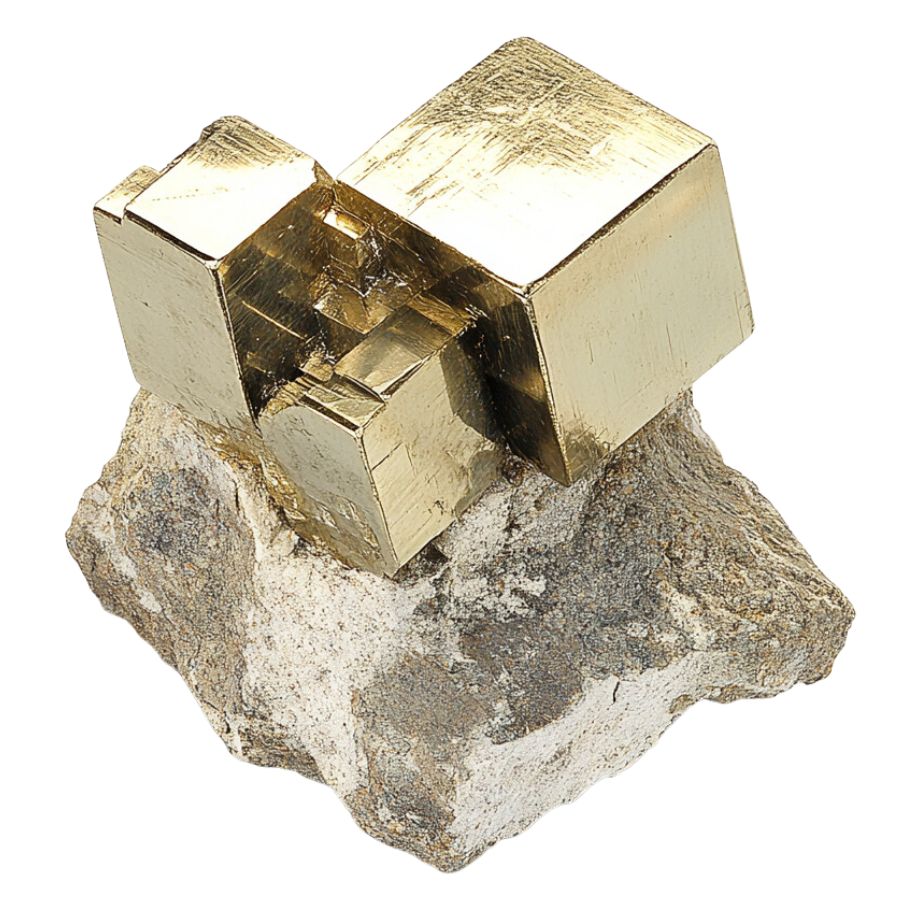
Often mistaken for gold due to its metallic luster and pale brass-yellow hue, pyrite is known colloquially as “fool’s gold.” Its characteristic cube-shaped crystal formations look man-made but are actually completely naturally formed!
Pyrite also has historical importance in producing sulfur dioxide for sulfuric acid production.
Rhodochrosite
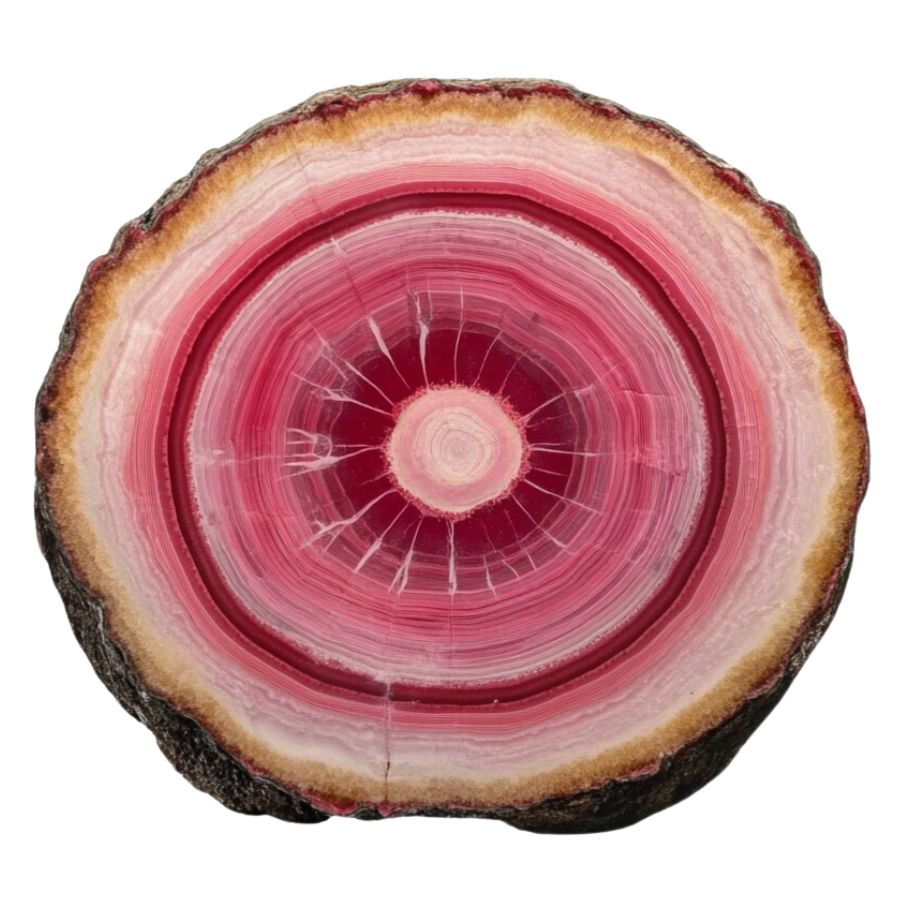
Rhodochrosite stands out with its rich pink and red hues, making it highly desirable as both a mineral specimen and a gemstone.
It typically forms in layered or stalactitic structures, with bands of colors that showcase how it grew over millions of years.
Beyond its beauty, rhodochrosite is significant as the main source of manganese, an essential element used in metal alloys.
Rhodonite
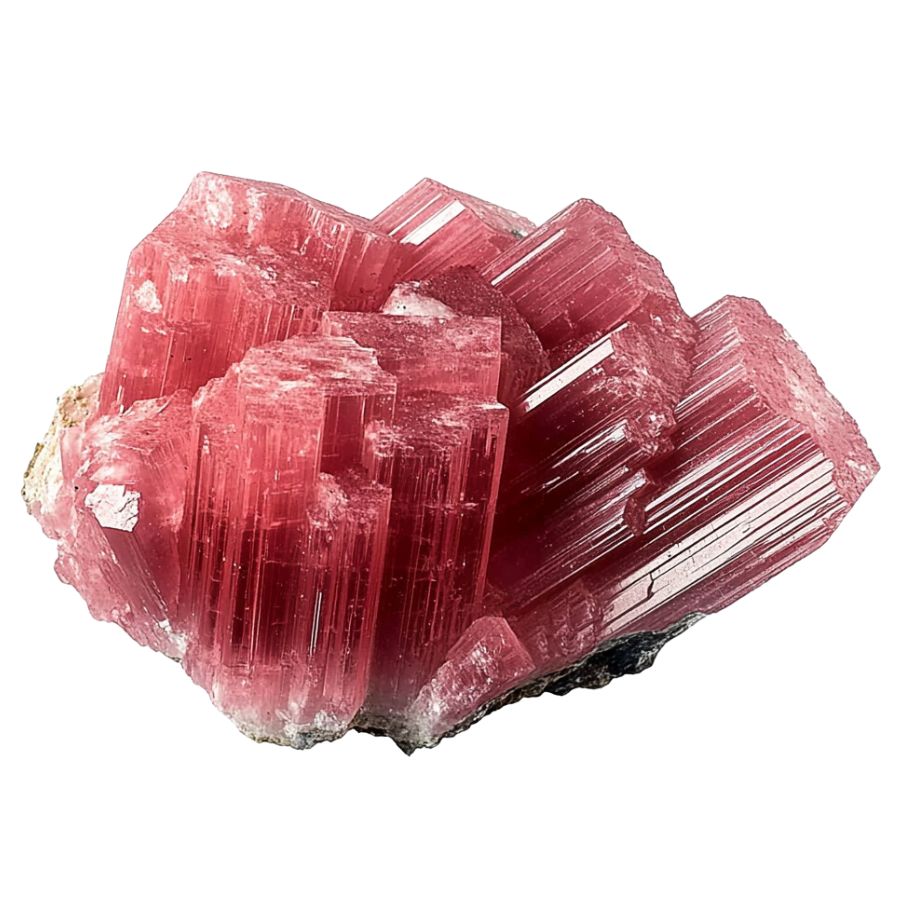
Appreciated for its deep pinks and reds, often complemented by black manganese oxide veins, rhodonite presents a dramatic appearance. It is typically found in metamorphic rocks and is used both as an ornamental stone and in jewelry.
In geology, rhodonite is significant for its role in metamorphic processes and its association with other manganese-rich minerals. It can be found in metamorphosed sedimentary rocks and is sometimes used as an indicator of the presence of manganese deposits.
Vivianite
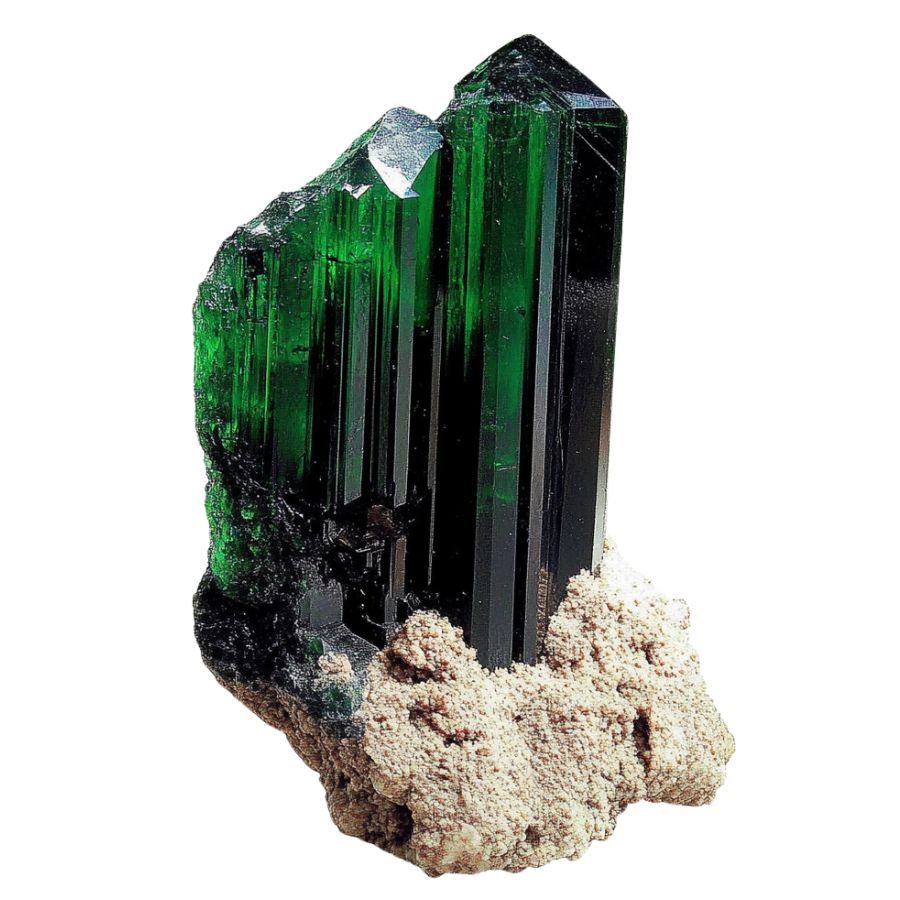
Vivianite, an iron phosphate mineral, emerges in low-oxygen environments like peat bogs or iron-rich deposits. Its striking blue to green color, which can change to a lighter shade over time due to oxidation, makes it a distinctive mineral.
Found in various geological settings, vivianite provides clues about the local conditions and the presence of phosphate deposits.
The Types of Illinois Crystals You Can Find
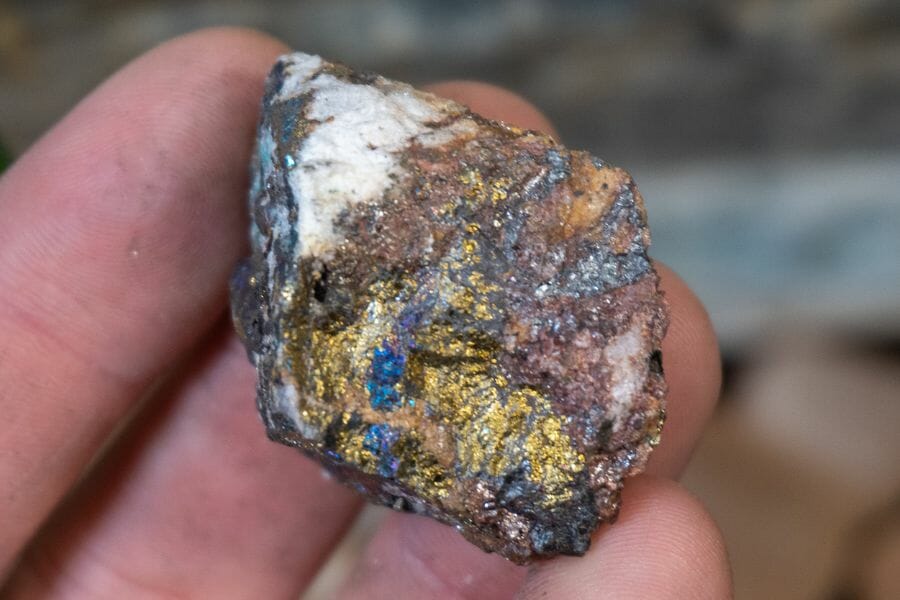
Crystals come in all shapes and sizes, from the tiniest flecks to large formations, and have been around for ages, used for healing and decoration. They’ve even been said to help with energy balance and emotional well-being. People use crystals to express themselves, creating unique jewelry pieces or adding a special touch to their home decor. Whatever the purpose, it’s hard to deny the beauty of these unique rocks!
Rare crystals found in Illinois
- Calcite
- Chalcopyrite
- Fluorite
- Galena
- Tourmaline
More common crystals found here
- Agate
- Jasper
- Pyrite
What rough crystals look like
When you’re out looking for crystals on your own it’s important to know what you’re looking for. This is what you need to look out for:
Look for exteriors like this
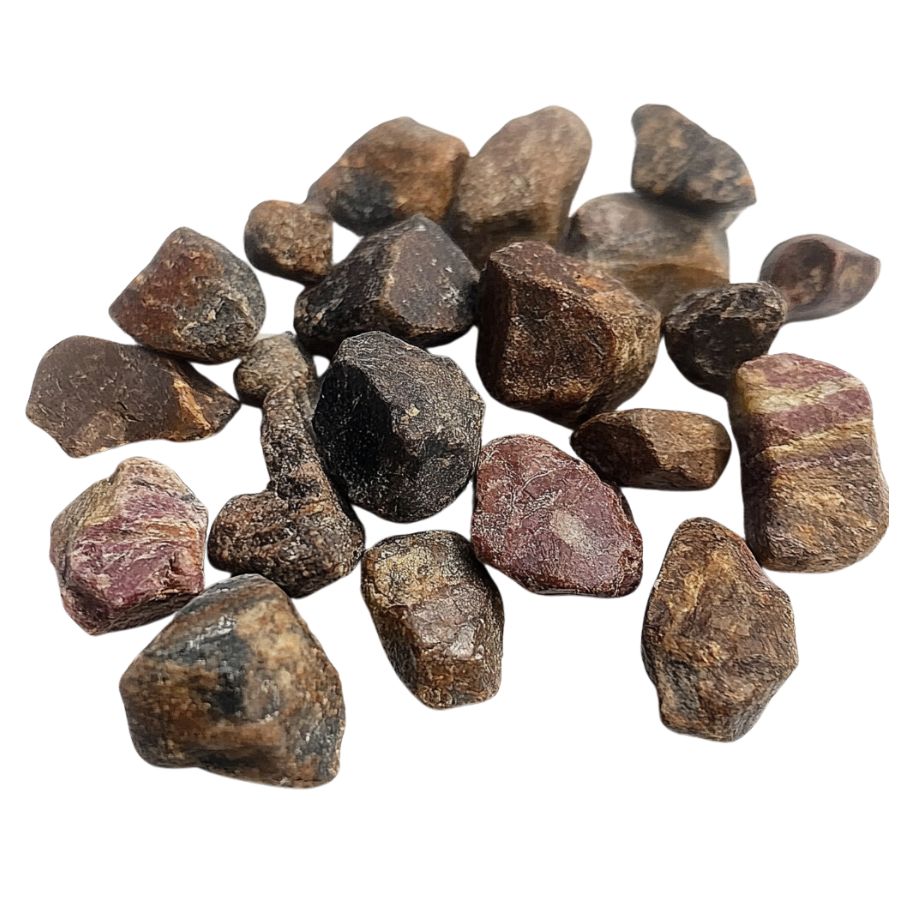
When you’re out searching for crystals in the wild, it’s essential to keep in mind that what you find won’t look like the polished stones you see in stores. One important tip is to consider what certain crystals look like in their raw, natural form.
Without the shine and smooth finish, crystals might appear rough, with jagged edges or earthy tones masking their true beauty. Understanding this can help you spot potential finds that might otherwise be overlooked.
Examine the crystal structure and shape
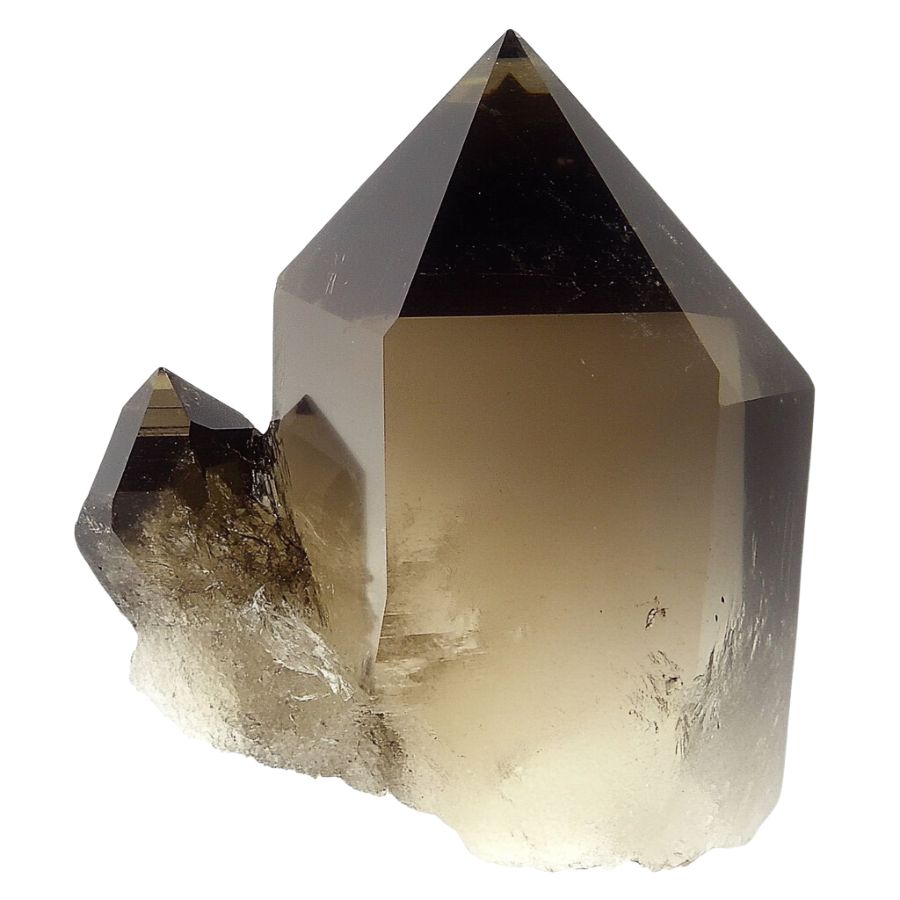
Crystals often form in specific geometric patterns that can be key to identifying them. For example, quartz is known for its hexagonal prisms, while halite typically forms cubic shapes.
By recognizing these distinct patterns, you can differentiate between various types of crystals and better understand what you’ve found.
Observe color
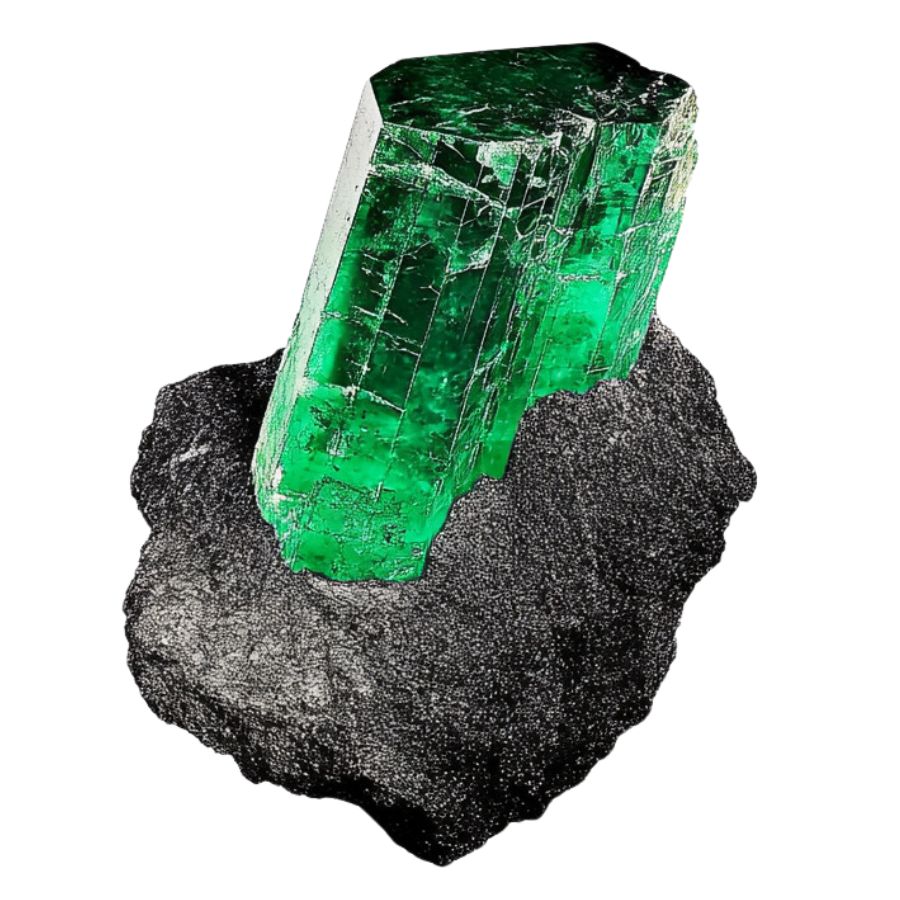
Some crystals are known for their distinct hues, like the deep purple of amethyst or the vibrant green of emerald. However, not all crystals will have strong colors; some may be clear or only slightly tinted.
Check the luster
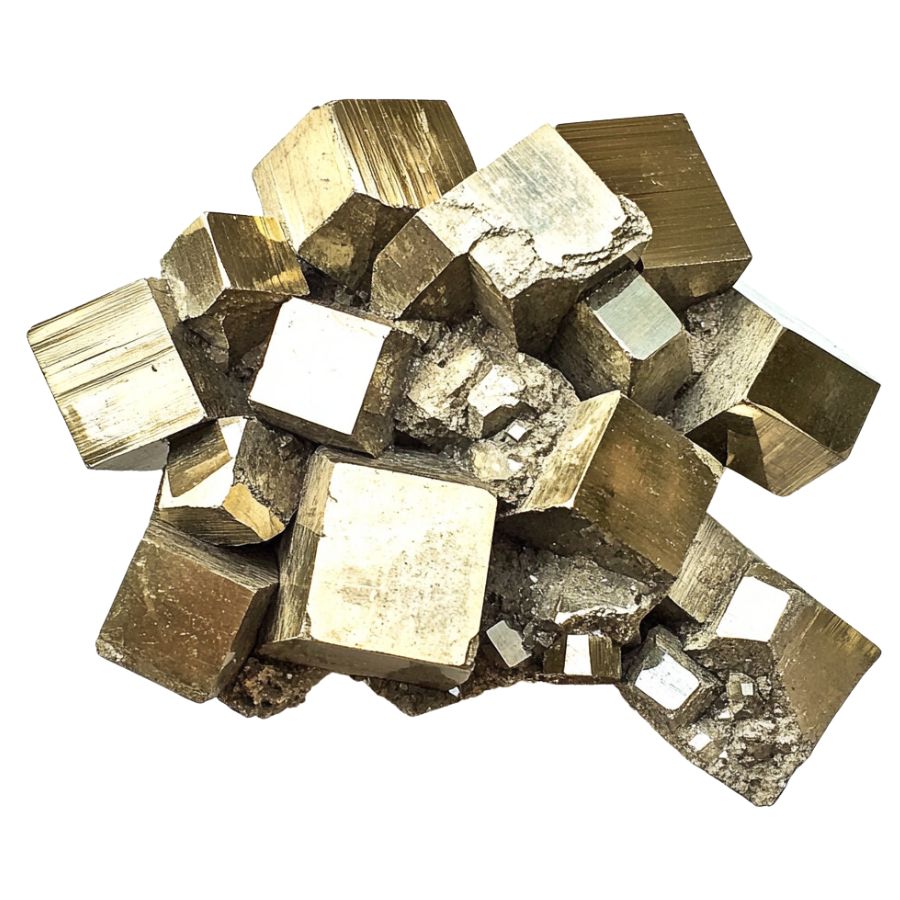
Luster refers to how a crystal’s surface interacts with light. Some crystals might have a shiny, glassy luster, while others may appear metallic or dull. This characteristic can help you determine the type of crystal you’ve found.
However, it’s important to remember that luster isn’t always obvious right away. In some cases, a crystal’s true luster will only become apparent after it’s been cleaned or polished, so keep this in mind as you examine your finds.
Evaluate the transparency
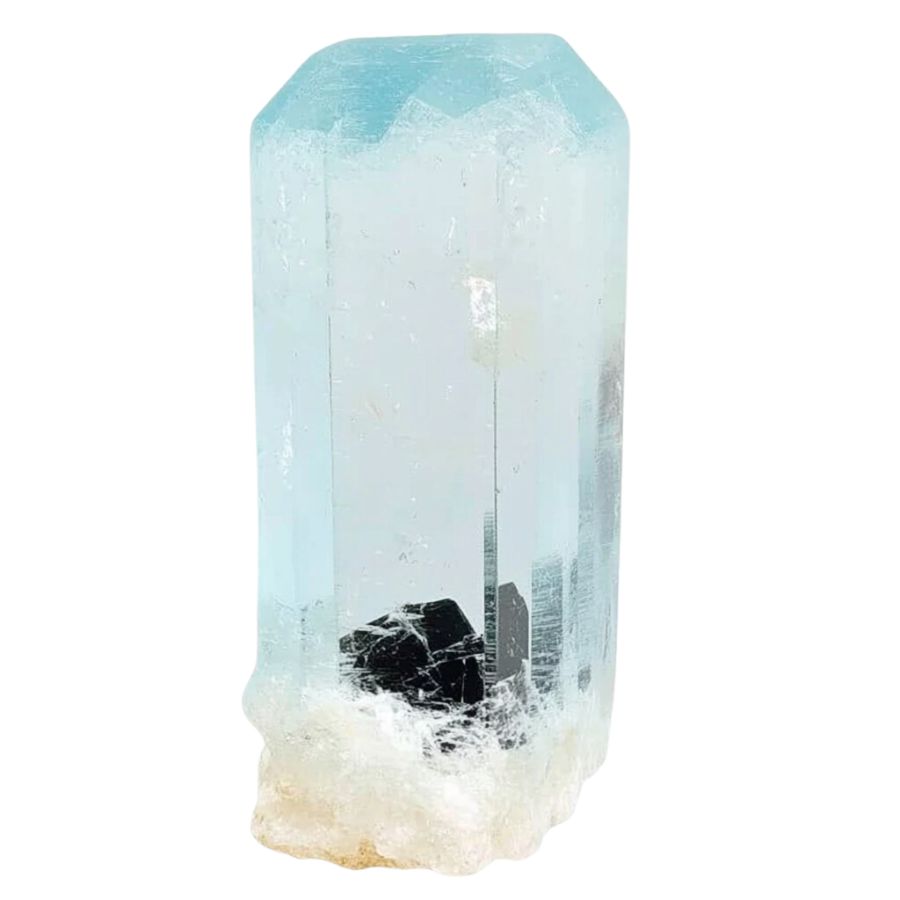
Pay close attention to how much light passes through the crystal. Some crystals are completely clear, allowing light to pass through easily, while others may be opaque and block light entirely.
You might also encounter crystals with translucent edges but opaque centers. These variations in transparency can offer valuable clues about the type of crystal you’ve found, making it easier to identify and appreciate your discovery.
A Quick Request About Collecting
Always Confirm Access and Collection Rules!
Before heading out to any of the locations on our list you need to confirm access requirements and collection rules for both public and private locations directly with the location. We haven’t personally verified every location and the access requirements and collection rules often change without notice.
Many of the locations we mention will not allow collecting but are still great places for those who love to find beautiful rocks and minerals in the wild without keeping them. We also can’t guarantee you will find anything in these locations since they are constantly changing.
Always get updated information directly from the source ahead of time to ensure responsible rockhounding. If you want even more current options it’s always a good idea to contact local rock and mineral clubs and groups
Tips on where to look
Having a better idea of where to look can greatly narrow down your search and increase your chances of finding crystals. By focusing on environments where crystals are likely to be exposed, you can spend less time searching and more time discovering.
Outcrops and Exposed Rock
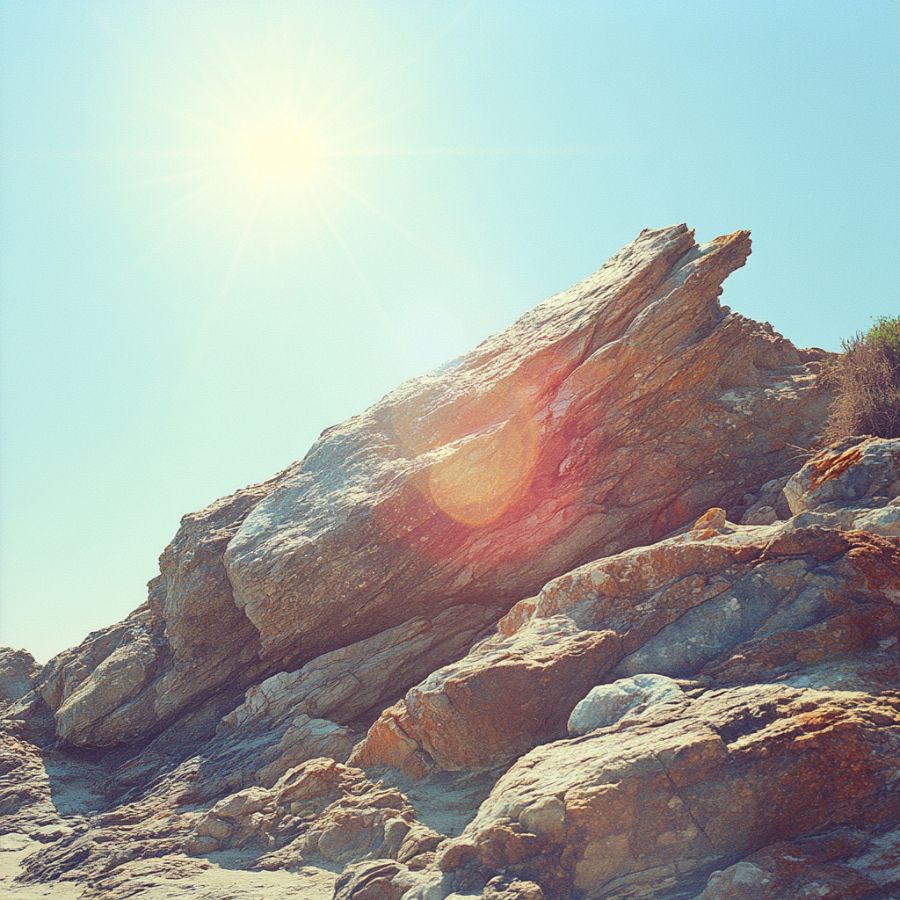
Rocky outcrops are prime locations for finding crystals and minerals. Search along the edges of outcrops, particularly where erosion has worn away the surrounding soil, revealing the rock underneath.
Pay close attention to any visible cracks, crevices, or small cavities within the outcrop, as these are often where crystals develop and can be extracted with minimal effort.
Stream Beds and Gravel Deposits
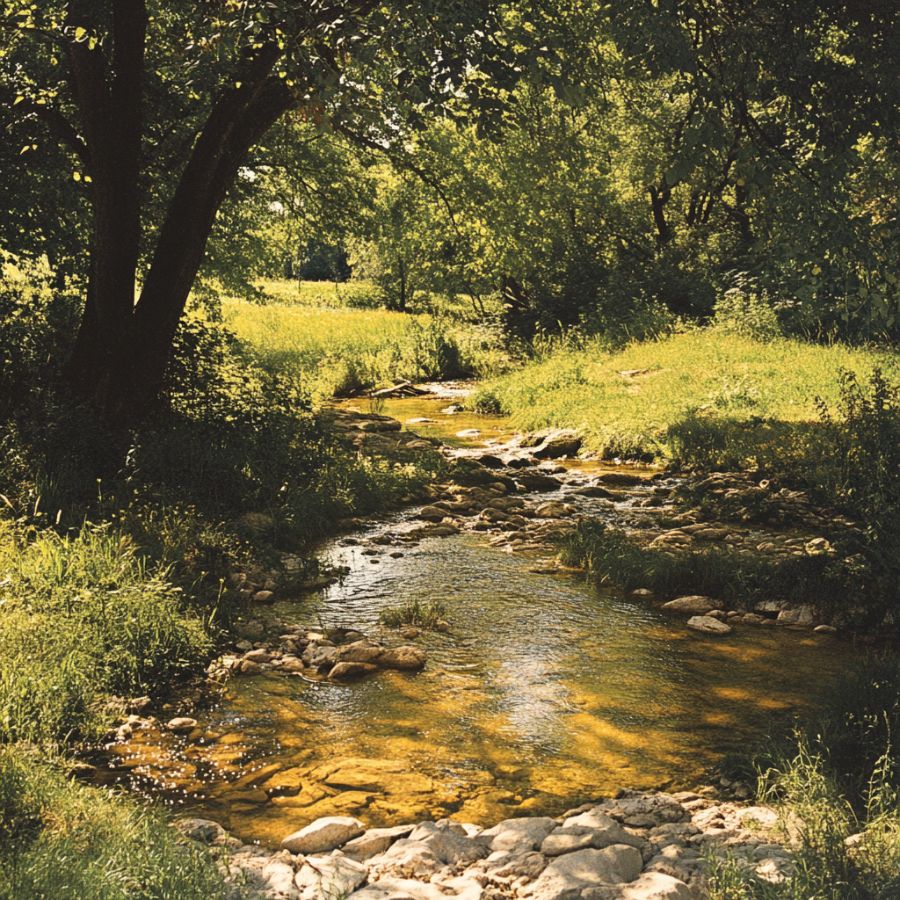
Stream beds are dynamic environments where water flow constantly shapes the landscape. Over time, water can erode rocks upstream, breaking them down and carrying mineral fragments, including crystals, downstream.
When searching in these areas, look for spots where the current has slowed, such as bends in the stream or areas behind large rocks, as these are prime locations for deposits.
Quarries and Mines
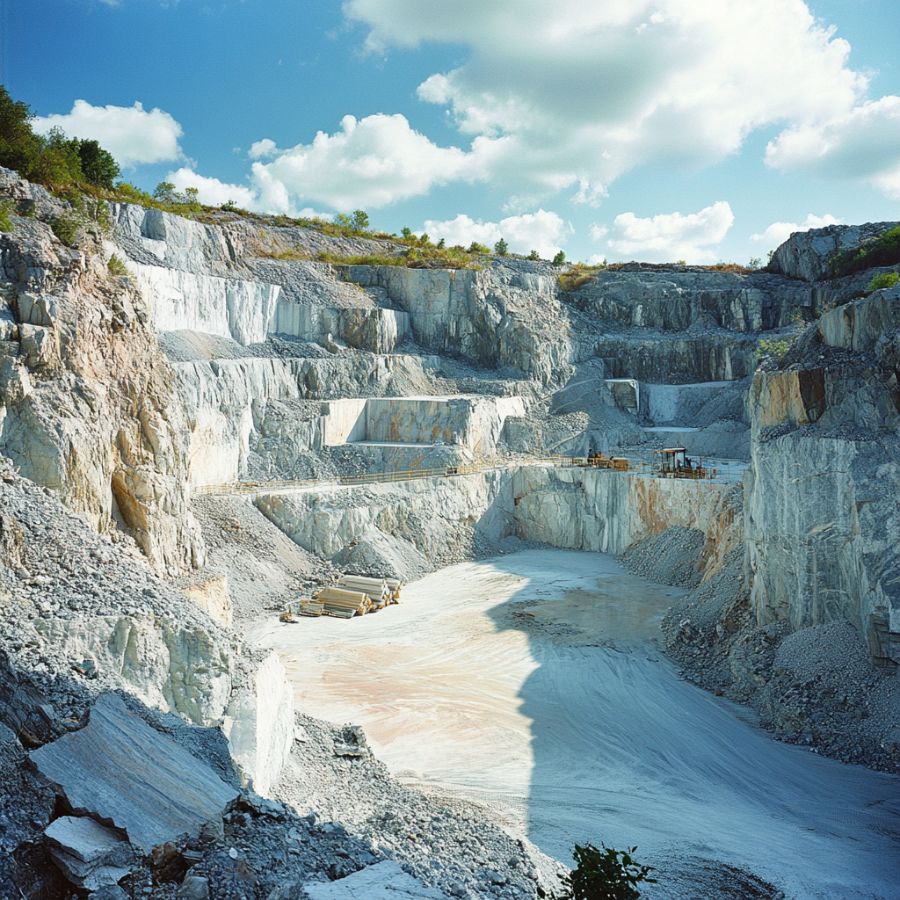
Quarries and mines are excellent places to search for crystals because they expose deep layers of rock that would otherwise be hidden beneath the surface. These sites often contain a variety of minerals and crystals that have been brought to the surface during excavation.
Pay attention to tailings piles, where waste rock is discarded, as they often contain overlooked or broken crystals. Always prioritize safety when exploring these areas and ensure that you have permission to search.
Road Cuts and Construction Sites
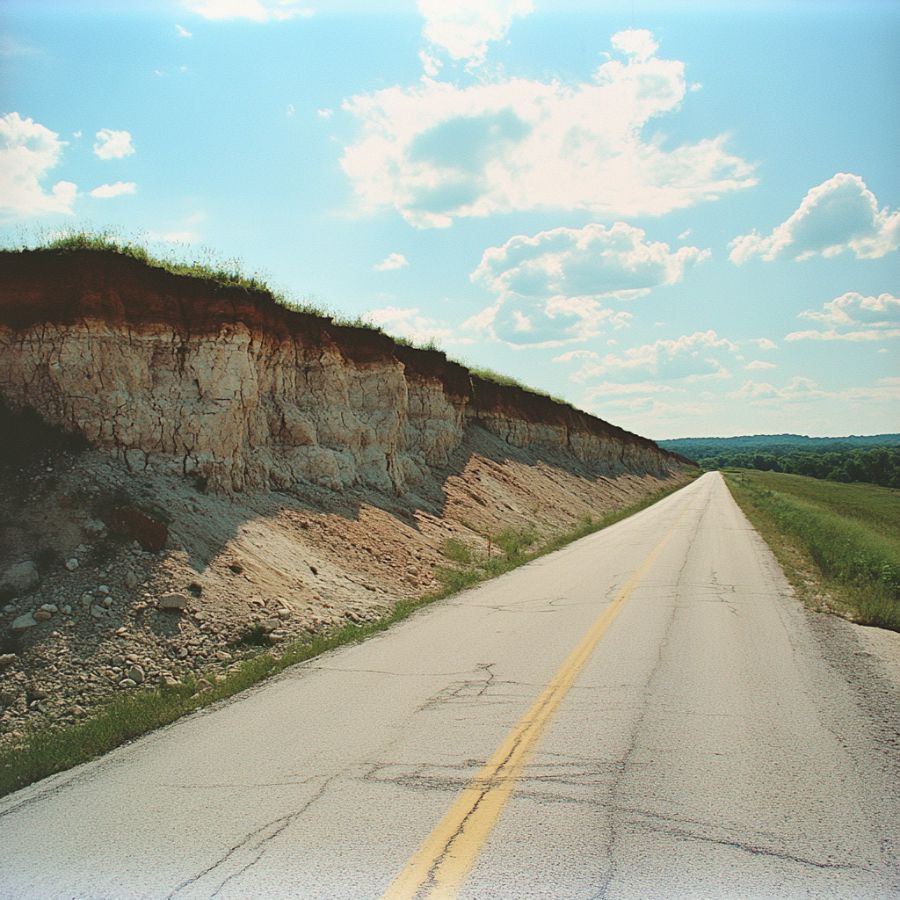
As roads are cut through hillsides or construction projects dig deep foundations, layers of rock and soil that have been undisturbed for millions of years are suddenly exposed.
Look for freshly exposed rock faces, especially where blasting has occurred, as this can create fissures or expose pockets filled with crystals. Be cautious around active construction sites, and always seek permission before exploring.
Mountainous Areas
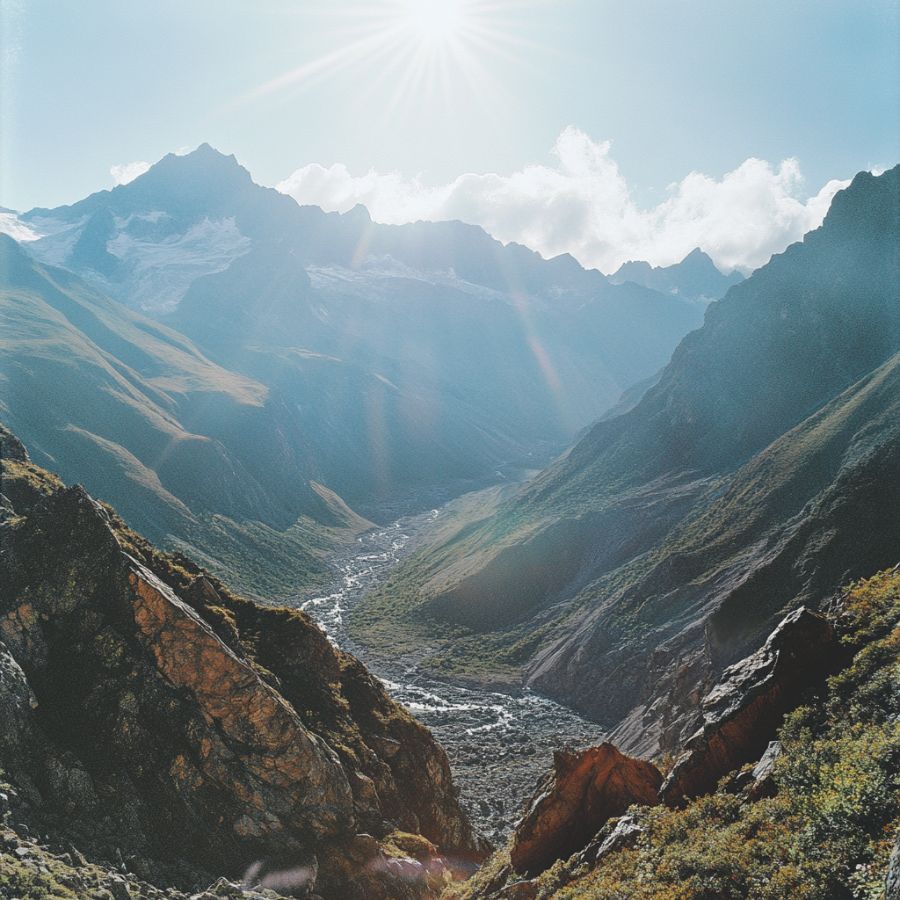
In mountainous regions, erosion caused by wind, rain, and ice can wear away the softer rock, exposing harder crystals that have formed within. Focus on weathered and broken rock formations.
Look for scree slopes, where loose rock has accumulated at the base of cliffs. Additionally, areas near fault lines or volcanic vents are particularly promising, as they often have a higher concentration of minerals.
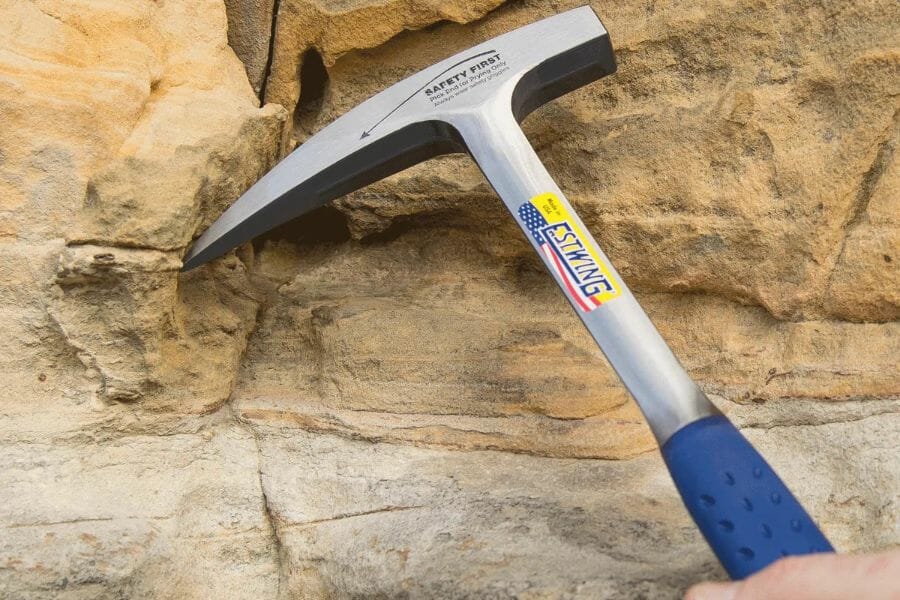
The tools every crystal hunter will need
When you're out looking for crystals having the right tools for the job is very important. You don't need a lot for most trips but there are a handful that are critical and will make your life a lot easier.
We get asked a lot about the equipment we use. Over the years we've found a handful of tools that we recommend to both new and experienced crystal miners which we outline in great detail in our complete rockhounding equipment guide. These are quality options that also happen to be relatively inexpensive.
Below are the basic tools that make your life so much easier and save you a ton of time. Check out the full guide to see everything we recommend bringing. One quick note, as an Amazon Associate I earn from qualifying purchases but we try very hard to only recommend gear we would use ourselves and often recommend brands you can't find on Amazon.
At a minimum you should have:
1 - Sturdy rock hammer: The Estwing Rock Pick is our standard
2 - Rugged chisels: Try Kendo' 3-piece Chisel Set
3 - Compact shovel: The Koleiya 28-inch shovel works well
4 - Rock screen pan: The Wazakura Soil Sieve Set fits the bill
5 - Eye protection: DeWalt Safety Glasses are cheap and comfortable
6 - Head protection: Malta's Safety Helmet has been our go-to
7 - Jewelers lens with at least 20x magnification: Jarlink's Jewelers Loop is perfect
The crystal-finding books that we use most
There are also a few books that have been extremely helpful in the search for gems. These books have great recommendations and tips:
National Audubon Society Field Guide to Rocks and Minerals: North America
Southeast Treasure Hunter's Gem & Mineral Guide
Earth Treasures: The Southeastern Quadrant
We provide links to find these tools on Amazon but some can also be found at your local hardware stores. For more recommendations check out the link to our full tool guide above.
Illinois Crystal Mining Laws And Regulations
Crystal hunting is a popular hobby that many people enjoy in Illinois. However, it’s important to be aware of the Illinois Department of Natural Resources regulations before engaging in this activity. Crystal hunting is allowed on public lands, but collecting on private lands requires permission from the landowner.
In addition, rock collecting is limited to 10 pounds per person per day and no more than 25 pounds per group per day. The collection of fossils and artifacts is prohibited, as they are protected under state law.
It’s also important to note that any specimens collected must remain in their natural state; they may not be altered or modified.
- The extensive local experience and understanding of our team
- Input from multiple local crystal hunters and crystal collecting groups
- The accessibility of the crystal mining locations
- Safety and potential hazards when collecting
- Private and public locations
- A desire to include locations for both experienced crystal hunters and those who are just starting out
Using these weights we think we’ve put together the best list out there for those who love finding new crystals for our collections!
The Best Locations For Crystal Mining in Illinois
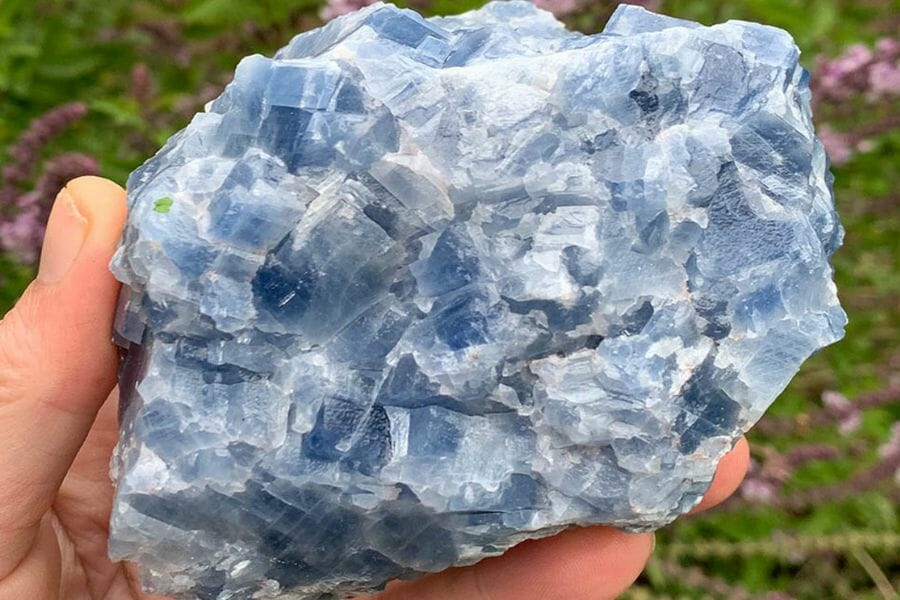
Check out these locations if you can only visit a few places. We have the most success in these areas and anticipate that you will also.
Always Confirm Access and Collection Rules!
Before heading out to any of the locations on our list you need to confirm access requirements and collection rules for both public and private locations directly with the location. We haven’t personally verified every location and the access requirements and collection rules often change without notice.
Many of the locations we mention will not allow collecting but are still great places for those who love to find beautiful rocks and minerals in the wild without keeping them. We also can’t guarantee you will find anything in these locations since they are constantly changing.
Always get updated information directly from the source ahead of time to ensure responsible rockhounding. If you want even more current options it’s always a good idea to contact local rock and mineral clubs and groups
Empire Mine
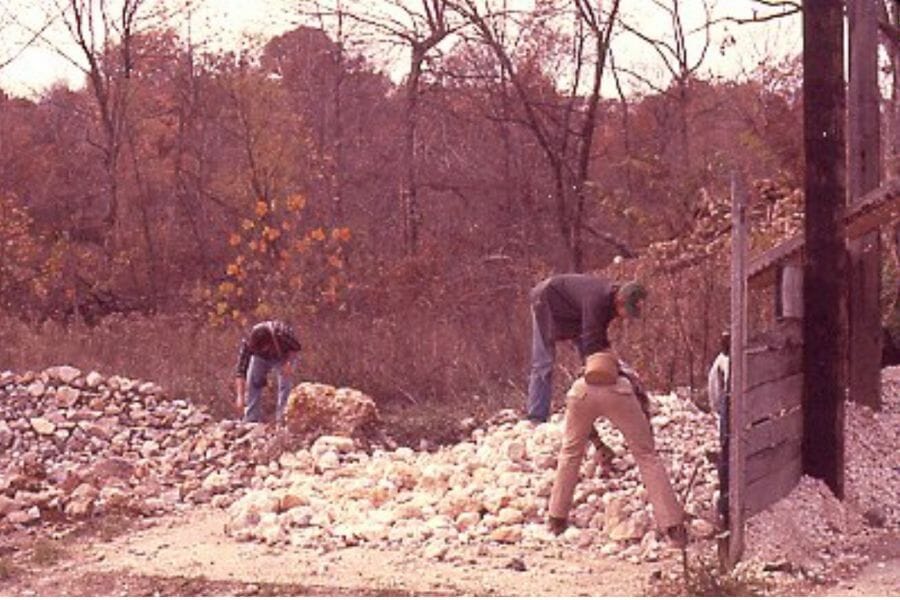
Pope County, IL
If you’re looking for a good area in the state to find some stunning crystals, the Empire Mine might be worth the visit. It’s not hard to see why this old location has long been acclaimed as a favorite by crystal hunters. This is also among the best locations for gem mining in Illinois.
Located in the heart of the Midwest, the Empire Mine has a long history of providing a variety of gems and minerals to the public. Founded in 1872, it was originally used as an underground coal mine but was later converted into a gemstone and crystal mine. The mine offers visitors a chance to go on guided tours and try their hand at digging for some of the many stones available there.
Geologically speaking, Empire Mine is unique due to its limestone and shale deposits that provide an array of minerals like fluorite, galena, pyrite, and more. It’s also known for its wide variety of agates, with colors ranging from deep blues to vibrant pinks.
With such an abundance of gems and minerals available, the Empire Mine is definitely worth checking out if you’re looking for something special. Plus, getting your hands dirty and taking part in some old-fashioned treasure hunting is always fun!
Where we found crystals at the Empire Mine
You can find fluorite, galena, and pyrite crystals at the Empire Mine in the Rosiclare area.

The tools every crystal hunter will need
When you're out looking for crystals having the right tools for the job is very important. You don't need a lot for most trips but there are a handful that are critical and will make your life a lot easier.
We get asked a lot about the equipment we use. Over the years we've found a handful of tools that we recommend to both new and experienced crystal miners which we outline in great detail in our complete rockhounding supplies guide. These are quality options that also happen to be relatively inexpensive.
Below are the basic tools that make your life so much easier and save you a ton of time. Check out the full guide to see everything we recommend bringing. One quick note, as an Amazon Associate I earn from qualifying purchases but we try very hard to only recommend gear we would use ourselves and often recommend brands you can't find on Amazon.
At a minimum you should have:
1 - Sturdy rock hammer: The Estwing Rock Pick is our standard
2 - Rugged chisels: Try Kendo' 3-piece Chisel Set
3 - Compact shovel: The Koleiya 28-inch shovel works well
4 - Rock screen pan: The Wazakura Soil Sieve Set fits the bill
5 - Eye protection: DeWalt Safety Glasses are cheap and comfortable
6 - Head protection: Malta's Safety Helmet has been our go-to
7 - Jewelers lens with at least 20x magnification: Jarlink's Jewelers Loop is perfect
The crystal-finding books that we use most
There are also a few books that have been extremely helpful in the search for gems. These books have great recommendations and tips:
National Audubon Society Field Guide to Rocks and Minerals: North America
Northeast Treasure Hunter's Gem & Mineral Guide
Earth Treasures: The Northeastern Quadrant
We provide links to find these tools on Amazon but some can also be found at your local hardware stores. For more recommendations check out the link to our full tool guide above.
Fairview Mine
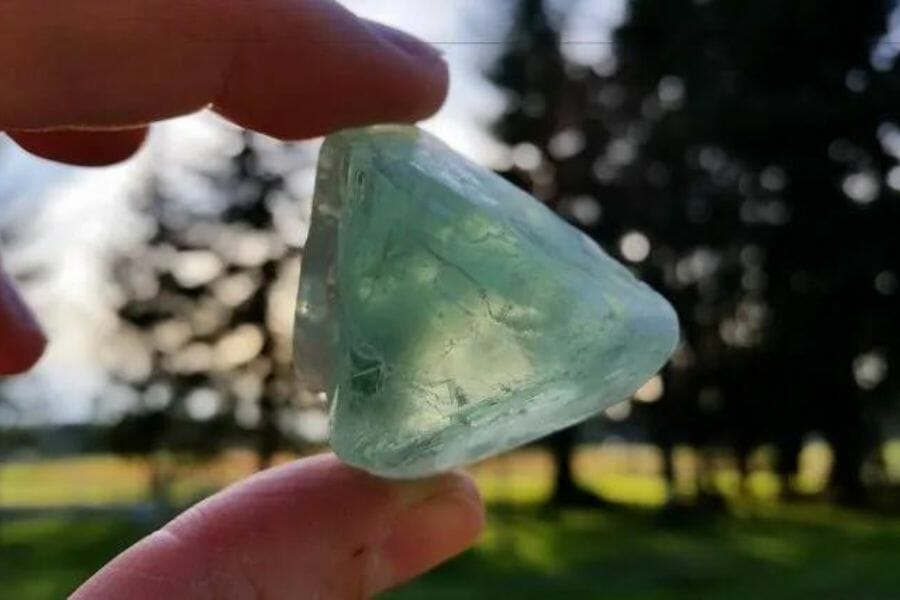
Blue Diggings Fault in Hardin County
The Fairview Mine in Illinois is a great spot for crystal hunters. Located in the rolling hills of southern Illinois, this mine has been around since the late 1800s and has produced some of the most beautiful crystals in the region.
The geology here is quite fascinating, too – it’s made up of sedimentary rock formed millions of years ago when the area was underwater. This means there are plenty of cracks and crevices where minerals can be found. Plus, there’s plenty of open space to explore, so you can take your time searching for just the right crystal.
So if you’re looking for some good ol’ fashioned crystal hunting, the Fairview Mine is definitely worth checking out!
Where we found crystals at the Fairview Mine
Crystals of pyrite, galena, and fluorite can be found at the Fairview Mine in the Rosiclare region of Hardin County. Current crystal prices may be found in this detailed guide we’ve created for crystal hunters.
Mississippi River
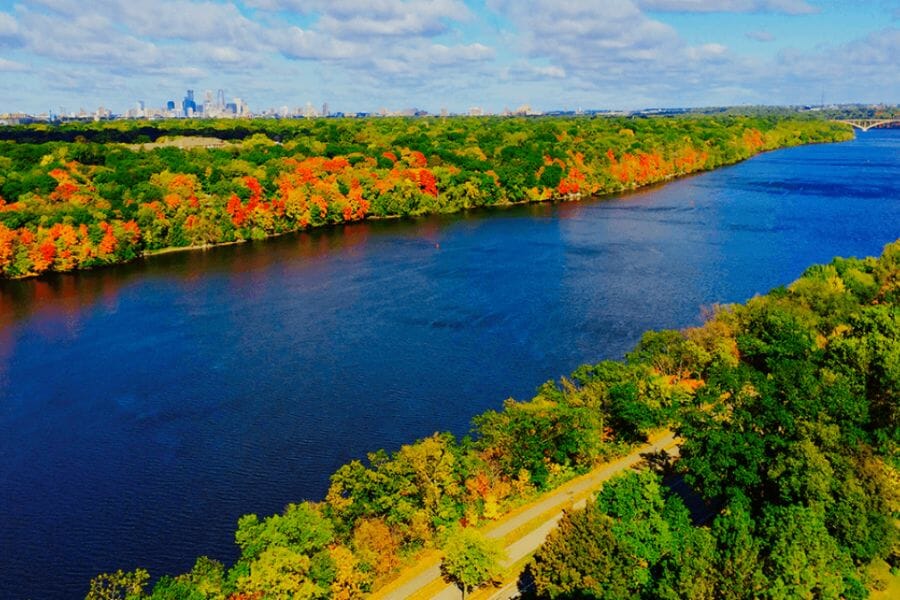
The Mississippi River is a great place to find crystals. It’s a beautiful, winding river that runs through the state, and its winding banks are full of natural wonders. The unique geography and geology of the area make it an excellent place to search for crystals. The river has been around for centuries, with Native Americans inhabiting the area before European settlers arrived in the 1600s.
In modern times, many people come to the river to boat or fish and find crystals on its banks. The unique geological features make it a prime spot for finding quartz and other gems near rivers. There’s no better way to spend an afternoon than searching for crystals along the banks of the Mississippi!
Where we found crystals in the Mississippi River
We mostly found agate and jasper crystals in the Mississippi River’s pits, bars, and gravel deposits.
Ozark Mahoning Mine
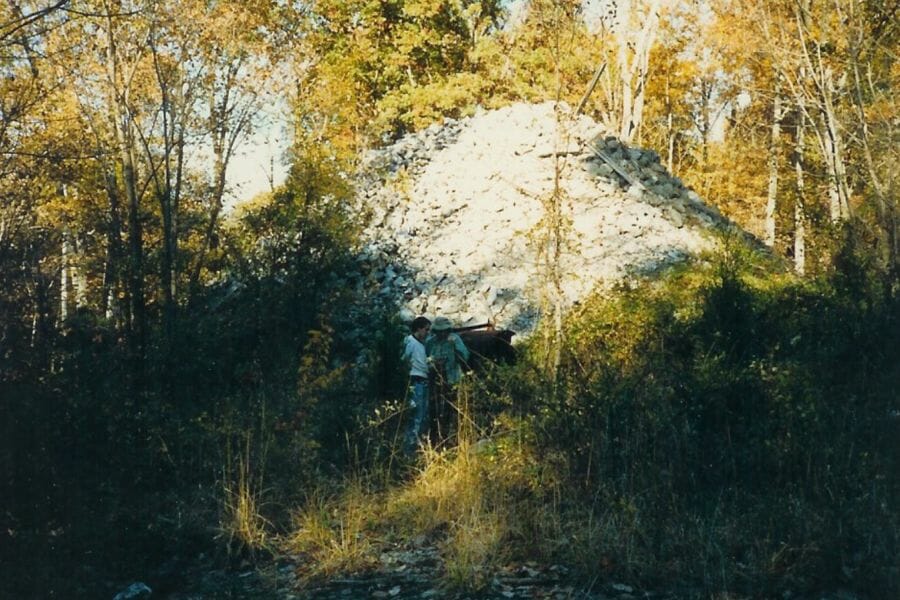
Hardin County, IL
The Ozark Mahoning Mine is a special place for crystal seekers. Located in the middle of the state, it has become a popular destination for those looking to find quartz crystals. The mine was discovered in the late 1800s by miners searching for coal. They soon found the area rich in quartz deposits, which they mined and sold as gemstones.
The mine is on a hillside that overlooks the Mississippi River Valley and offers stunning views of the surrounding countryside. It’s an ideal spot for finding crystals, as its geology is composed of layers of quartz and sandstone which are perfect for uncovering those elusive gems.
It’s also easy to access – take a short drive from St Louis or Chicago, and you’ll be there in no time! Whether you’re an experienced crystal hunter or looking to try your luck, the Ozark Mahoning Mine is an ideal spot to find these precious stones.
Where we found crystals at the Ozark Mahoning Mine
Calcite and fluorite crystals are abundant in the area of the Ozark Mahoning Mine at Rosiclare.
Pope County
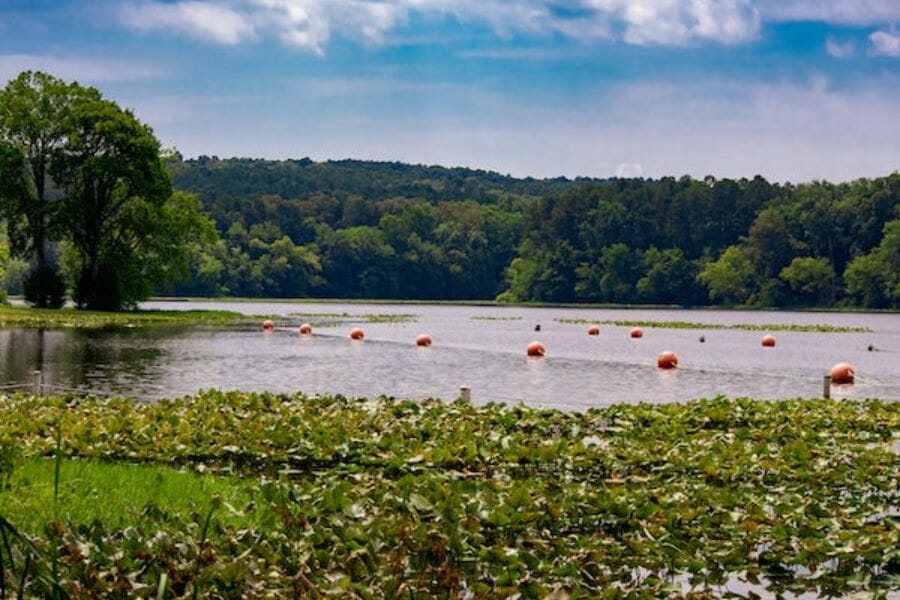
Pope County is located in the southern region of Illinois. It’s bordered to the north by Hardin County and to the south by Massac and Johnson Counties. The land in this area is mostly flat, with a few rolling hills here and there. The soil is mainly made up of clay and loam, which makes it a great place for growing crops.
Regarding geology, Pope County has plenty of limestones, quartz, and other minerals that can be abundant if you know where to look. This makes it an ideal spot for rockhounds looking for crystals! Some of the most beautiful crystals in the state can be found right here in Pope County. If you’re interested in finding some unique rocks or crystals, Pope County should definitely be on your list of places to explore!
Where we found crystals at Pope County
Pope County is abundant in chalcopyrite, fluorite, galena, and pyrite crystals, which you can locate at the area mines, including Pittsburg and McClellan.
Our Other Favorite Places For Crystal Hunting

Following our favorite locations for finding crystals in the state we discussed above, we wanted to give you a wide range of options. In a state with such geological diversity, there are more incredible options to go crystal hunting and find Illinois geodes. More recommended areas that you should visit are listed below:
Where you can find crystals for free in Illinois
We’ll begin by discussing a few areas where you may hunt crystals for free. Even though many of the most incredible locations require a fee, certain places won’t cost you a dime!
| County | Location |
| Alexander | Area stream gravels in Fayville area for agates and jaspers |
| Hancock | Glacial drift deposits and area gravels for agates and jaspers |
| Hancock | Local gravel pits in Warsaw for agates |
| Henry | On the banks of Mississippi River at the Cordova area for agates |
| Henry | Galva area at the north of Bishop Hill for agates and jaspers |
| Jo Da Viess | Area gravel pits of East Dubuque for agate |
| Kane | Old digs and dumps of the Road Fill Corporation and gravel pit on the north side of the road at Dundee area for agate and tourmaline |
Other great places to dig for crystals
Here are some additional locations to look for crystals if you’re ready to spend cash. The price will vary depending on the season; it may be free occasionally, so contact them in advance.
| County | Location |
| Fulton | Midland Coal Company Rapatee No. 5 Strip Mine in Farmington area for pyrite |
| Grundy | Area coal mine dumps in East Brooklyn for pyrite |
| Hardin | Cave-in-rock and Fluorspar mines area for calcite, chalcopyrite, galena, and pyrite crystals |
| Hardin | The area mines in Fairview Landing at Rosiclare for chalcopyrite, galena, pyrite |
| Hardin | Mahoning Mine for fluorite |
| Henderson | Area gravel pits and mine dumps of Terre Haute for pyrite |
| Jo Da Viess | At the area mine dumps of Apple River for galena and pyrite |
| Jo Da Viess | At the regional mine dumps of Galena for calcite |
| Kane | Conco Mine for calcite, chalcopyrite, and pyrite |
| Will | On the dumps of regional mines in the coal formations at Wilmington area for pyrite |
The Best Crystal Shops In Illinois

The state offers many crystals spread out throughout such a vast area that many of us like making small purchases to complete our collections. If you’re seeking unique and stunning pieces for your collection, these are the best crystal shops in the state we’ve located:
- Crystal Earth Rock Shop – 1125 S Main St J, Lombard, IL 60148, United States
- Crystal Life Technology, Inc. – 121 S 3rd St, Geneva, IL 60134, United States
- Garden of Beadin and Crystals – 901 S Eldorado Rd, Bloomington, IL 61704, United States
- High Ho Gems – 19622 Wolf Rd Unit 1, Mokena, IL 60448, United States
- On the Rocks Gems Jewelry – 5709 N Clark St, Chicago, IL 60660, United States
- Nature Haven – Tanglewood Shopping Plaza, 6926 North University Street, Peoria, IL 61614, United States
- Psychic Crystal Shop – 830 E Higgins Rd Ste 104F, Schaumburg, IL 60173, United States
- The Rock and Soul – 229 S Clark St, North Utica, IL 61373, United States
- Welcome to Here Crystals – 101 W Main St, Casey, IL 62420, United States
- Your Enchanted Crystal – 429 W Frontage Rd, Staunton, IL 62088, United States
Additional places to find crystals in nearby states
If you’ve already tried all of our recommendations above or are planning a trip out of the state, you should check out our guides for neighboring states:
If you have any recommendations we haven’t covered please leave them in the comments below!
Additional places to find crystals in nearby states
If you’ve already tried all of our recommendations above or are planning a trip out of the state, you should check out our guides for neighboring states:
- Crystals in Indiana
- Crystals in Iowa
- Crystals in Kentucky
- Crystals in Missouri
- Crystals in Wisconsin
If you have any recommendations we haven’t covered please leave them in the comments below!

